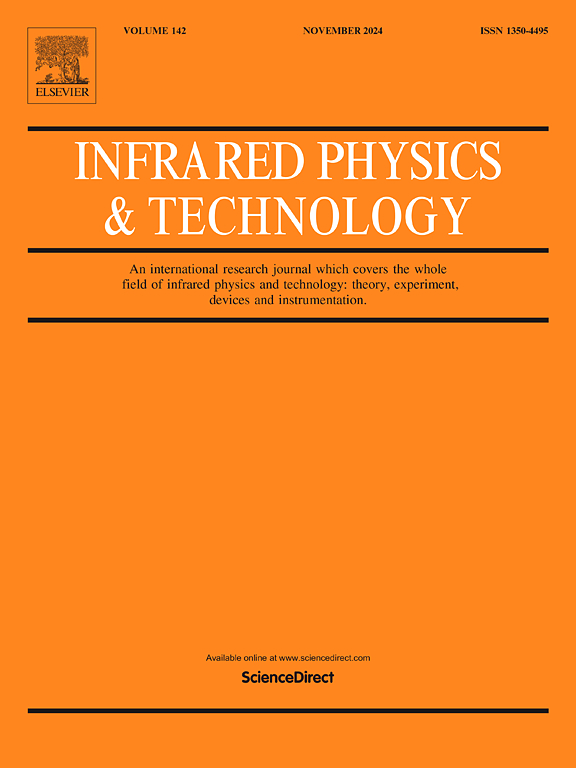Accumulation of holes at the mesa sidewall surface of InGaAsSb extended-short wavelength infrared photodetectors
IF 3.1
3区 物理与天体物理
Q2 INSTRUMENTS & INSTRUMENTATION
引用次数: 0
Abstract
This work investigates leakage mechanisms in InGaAsSb e-SWIR detectors by examining the surface states of the mesa sidewall and the longevity of passivation layers. The passivation efficacy of SU8, SiO2 and S-SiO2 films is evaluated, using an un-passivated photodetector as a reference. The S-SiO2 composite film passivated InGaAsSb mesa sidewall exhibits the highest surface resistivity. To investigate the factors contributing to this high surface resistivity, we employed gate-controlled photodetectors. Our findings indicate that the neutralization of dangling bonds at the InGaAsSb surface by sulfide is not the main factor. Instead, by examining the longevity of these passivation films, we determined that the high resistivity of the S-SiO2 film is related to its airtightness. Additionally, the GCPD results indicate an accumulation of holes at the InGaAsSb surface. These findings suggest that a pBp structure may provide advantages in reducing the leakage current of InGaAsSb e-SWIR photodetectors.
求助全文
约1分钟内获得全文
求助全文
来源期刊
CiteScore
5.70
自引率
12.10%
发文量
400
审稿时长
67 days
期刊介绍:
The Journal covers the entire field of infrared physics and technology: theory, experiment, application, devices and instrumentation. Infrared'' is defined as covering the near, mid and far infrared (terahertz) regions from 0.75um (750nm) to 1mm (300GHz.) Submissions in the 300GHz to 100GHz region may be accepted at the editors discretion if their content is relevant to shorter wavelengths. Submissions must be primarily concerned with and directly relevant to this spectral region.
Its core topics can be summarized as the generation, propagation and detection, of infrared radiation; the associated optics, materials and devices; and its use in all fields of science, industry, engineering and medicine.
Infrared techniques occur in many different fields, notably spectroscopy and interferometry; material characterization and processing; atmospheric physics, astronomy and space research. Scientific aspects include lasers, quantum optics, quantum electronics, image processing and semiconductor physics. Some important applications are medical diagnostics and treatment, industrial inspection and environmental monitoring.

 求助内容:
求助内容: 应助结果提醒方式:
应助结果提醒方式:


